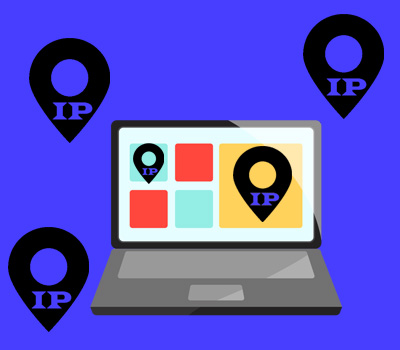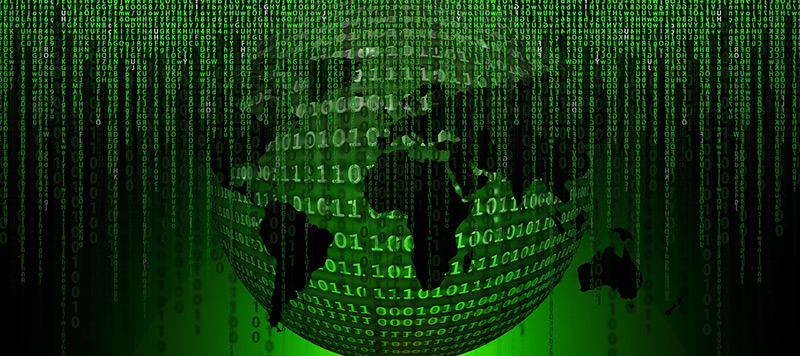
Index:
UPDATED ✅ Do you need to know what are the main protocols used in internet networks? ⭐ ENTER HERE ⭐ and meet them ✅ EASY and FAST ✅
The Internet is one of the best inventions in history, we all know that, but few have begun to investigate in depth this type of network. The reality is that they are much more complex than what can be seen with the naked eye..
An important element in the Internet and other computer networks is network protocols. These are what make it possible for communications within and between computer systems to occur in an orderly manner and without errors.otherwise it would not be possible to transmit data through them.
In this article we are going to delve into Internet protocols, those that make it possible for us to communicate without problems with people who are far away from us. By the end, you should be clear about how they interact and mainly how they work.
What is an Internet protocol and what are they used for in computing?
An Internet protocol is a type of network protocol used in online connections that connect computers globally. Among them the best known is the Internet protocol (IP) which is responsible for sending and receiving datagiving an IP address to each device on the network to easily identify its origin.

However, there are many more protocols within the communication process on the Internet. In fact, dozens of them are estimated to work together or as support for the main IP protocolsuch as TCP, which is essential to confirm the information that flows through the entire network.
What are the main characteristics that an Internet protocol must have?
A protocol is a standard or set of rules for transmitting and receiving data on a network. That is, it determines the way in which the information will travel throughout the network. This is not possible to do with a single protocol, but hundreds of them are needed to work together..
On the Internet, this suite is known as the TCP/IP protocols, and all are characterized by aspects such as the following:
- Direct/indirect: If a protocol works within the same network and joins one point to another, it is considered direct, while if it joins two points within two different networks, it will be indirect, since other protocols will intervene in this process.
- Monolithic/structured: when we speak of monolithic we refer to a single-layer protocol, this being where all its functions occur, while in a structured one it will affect several layers of the communication model.
- Symmetric/asymmetric: A symmetric protocol is one that is used to communicate between two users or computers with the same permissions and functions within the network. An asymmetric one will be the one that communicates equipment with different functions and weights within the entire network. The latter is the most used on the Internet.
- Normalized/non-normalized: A standardized protocol is one developed solely to perform a specific function that does not vary and does not need to be connected to an external agent. This is essential in digital communications today.
At which layer of the OSI model do the different Internet protocols work?
Internet protocols continue to be oriented to function in an environment structured with the ISO OSI model. This model is made up of 7 layers of different levels in which a fundamental action is executed to complete the communication of the entire network.
In this sense, the family of TCP/IP protocols work at intermediate levels, such as:

- Layer 2: The second level layer, known as the data link layer, is one of the most important because it is there where the information is verified and subsequently taken to the transport level. In this layer, more than 100 protocols work together that are part of the TCP/IP family.
- Layer 3: The network layer is where the IP protocol domains are, since it is there where the data enters the network, and later they are taken to the transport level to be sent to their destination. Hundreds of other Internet protocols work on it, but the most important is undoubtedly IP.
- Layer 4: the transport layer is where protocols such as TCP or data transmission are located. It is here that the network data packets arrive with indications of their destination, and it is also here that they begin their journey to the end of the model in the seventh layer.
- layer 5: We close with the session layer that is responsible for keeping the sessions open while the delivery of the information is completed. Hundreds of other protocols of the TCP/IP family work in it, all of which are of great importance.
Some protocols of the TCP/IP family also work at presentation layer 6, but these are usually present in a way that is not as direct as the previous 4which is where all the magic really happens.
List of the 10 most important Internet protocols currently used

Now it’s time to introduce you and clearly define the most important protocols of the TCP/IP family that you should know to understand how the Internet really works.
Next, we will present them one by one with all their elements:
TCP/IP
These are the two protocols that give the whole family its name. The first of them is the TCP or transmission control protocol, it is responsible for providing reliability, that is, verifying the data that is sent over the Internet, while the second, IP or Internet protocol, is responsible for sending this data to its destination by supplying them with a header to identify them.
Both one and the other are different protocols, which even live in different layers of the OSI model, but they are so important to each other that they are often called TCP/IP as if they were one because they work together and they need each other.
Both protocols were presented by the United States Department of Defense in 1972, as a purely digital communication technology. Over the years this was commercialized and later domesticated to the point that today the Internet is a basic service such as light or electricity.. TCP and IP are the basis of the entire Internet that we know today.
ARP
The address resolution protocol or Address Resolution Protocol in English is one of the most important in the Internet family. This is responsible for assigning an IP address to a motherboard or, what would be the sameto a computer within a network.
When a motherboard is manufactured, it is given a 48-bit identification number that cannot be identified by the IP protocol. For this reason, another protocol was developed that may be able to grant an IP address to these computers, which would replace said serial within the network. In addition, ARP is also responsible for registering in a virtual memory all the physical and IP addresses that exist and to which device they belong or were assigned.
HTTP
Hypertext Transfer Protocol or hypertext transmission protocol is a fairly simple protocol that follows the request-transmission logic of a client-server system. At the time it was thought to be used as a standard, but in the end TCP/IP took the throne.
This was developed to optimize requests for entry to the world wide web, and is requested in each transmission that is made within it. In addition, it gives a name to all the elements within a transmission, being the client that makes the request identified as the “Browser” either “Spider”. Information or resources are also identified and given a uniform resource identifier, which would be known later as URLone of the most important elements of digital navigation.
ICMP
Internet Message Control Protocol is its name in Spanish, and it works as an Internet protocol assistant that is responsible for identifying failures in the information and sending error messages to the user or server, such as if an address of this is not available or if a request fails. In this sense it is very similar to TCP, with the difference that many times the applications do not interact directly with it, so it is given the subprotocol definition.
SMTP
Simple Mail Transfer Protocol or simple mail transfer protocol is one of the few IP protocols that work in a different layer than the 4 that we mentioned in the previous section. This is responsible for the exchange of data by text in email messages between computers on the same network.
Like the previous protocols, it also follows the client-server model. A client can send to one or more receivers, thus making a request to the server. This request is written in ASIIC lines of maximum 1000 characters. The server will respond to this with a 3-digit identification number and a short text line that serves as a description of it.. The number is sent to another device within the network, while the text reaches the user so that he can read it. It is a simple and very effective process.
FTP
One of the most important protocols is the file transfer protocol, which makes it possible for us to send data and documents in a format other than text over the Internet. Like the others, it is also governed by the client-server modelallowing a user to upload or download files from the Internet, and later share them in the same way.
This is an essential protocol in networks that work under the TCP/IP logic, determining the basic concepts of uploading and downloading graphic and sound elements to the network.
SSH
Secure Shell is a widely used protocol for remote access to devices within the same network. It is also used as a program that allows you to link two or more devices. and enter from one of them to any of the others. This simple concept gives many facilities in the world of computing.
To begin with, it allows us to securely copy data that is stored on a computer, without having to interact directly with it. In the same way you can also manage the resources within the computer, and make backup copies of them.
SNMP
Secure network management protocol is the translation of its name in Spanish. This protocol is a fundamental element for programmers since it allows them to manage resources and optimize the operation of a network. It is like a control panel for network administrators that gives you full control over it, to establish new regulations on it, as well as control and plan its growth. This is a very important protocol for the maintenance of the global Internet network.
TFTP
Trivial File Transfer Protocol is its Spanish translation. This is a simple protocol that is used for data transmission within the same local network., allowing a computer to share information with another to which it is linked. It uses UDP as a data transmission and verification protocol, something in which it differs from its most complete version; the FTP.
However, it is much inferior to FTP, since it does not allow the information to be encrypted or the creation of lists to organize it. It is simply used as a protocol for reading and writing to a remote server. However, it is an essential complement for the operation of TCP/IP.
PDU
We close with what is possibly the third or fourth most important protocol, the user datagrams protocol, or user data packet protocol in Spanish. This is a transport protocol for data packets on a network even though no connection has yet been established on the network. The latter is possible because it provides the datagram with a header with enough information to be sent to its destination..
In this sense it is very similar to TCP, and in fact it is often used as a replacement for it in certain functions that have to do with the transmission and verification of data.
Internet